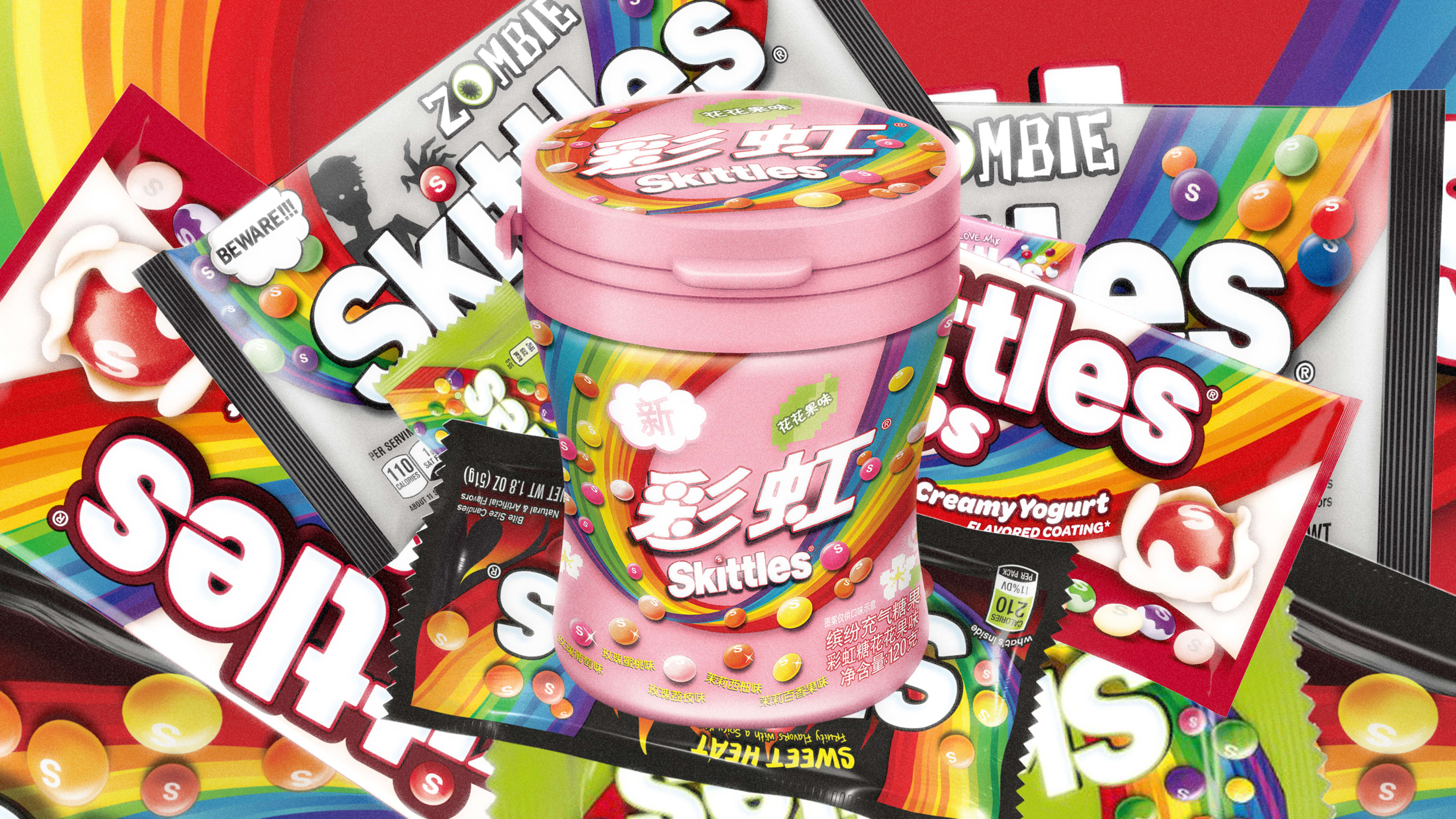Time machines don’t exist, no, but mankind has successfully developed artificial grape flavoring. So as I bite into this purple Skittle, my mouth rewinds back to my childhood. I recall the sensation of chewing a big wad of grape Bubblicious while riding my bike, and cracking open a grape pop during a sleepover. All the while, I’m ignoring the dental hygiene that would have saved me a dozen fillings.
Naturally, I pop another purple Skittle to chase the nostalgia. But as the sugar begins to dissolve on my tongue, my limbic system jars me back to the present. “WTF is this,” I wonder. It’s more sour than grape, and vaguely medicinal, like one of those froofy aperitifs that hip bars are always convincing me to taste when all I really want is another margarita. This isn’t the purple Skittle I know from my childhood!
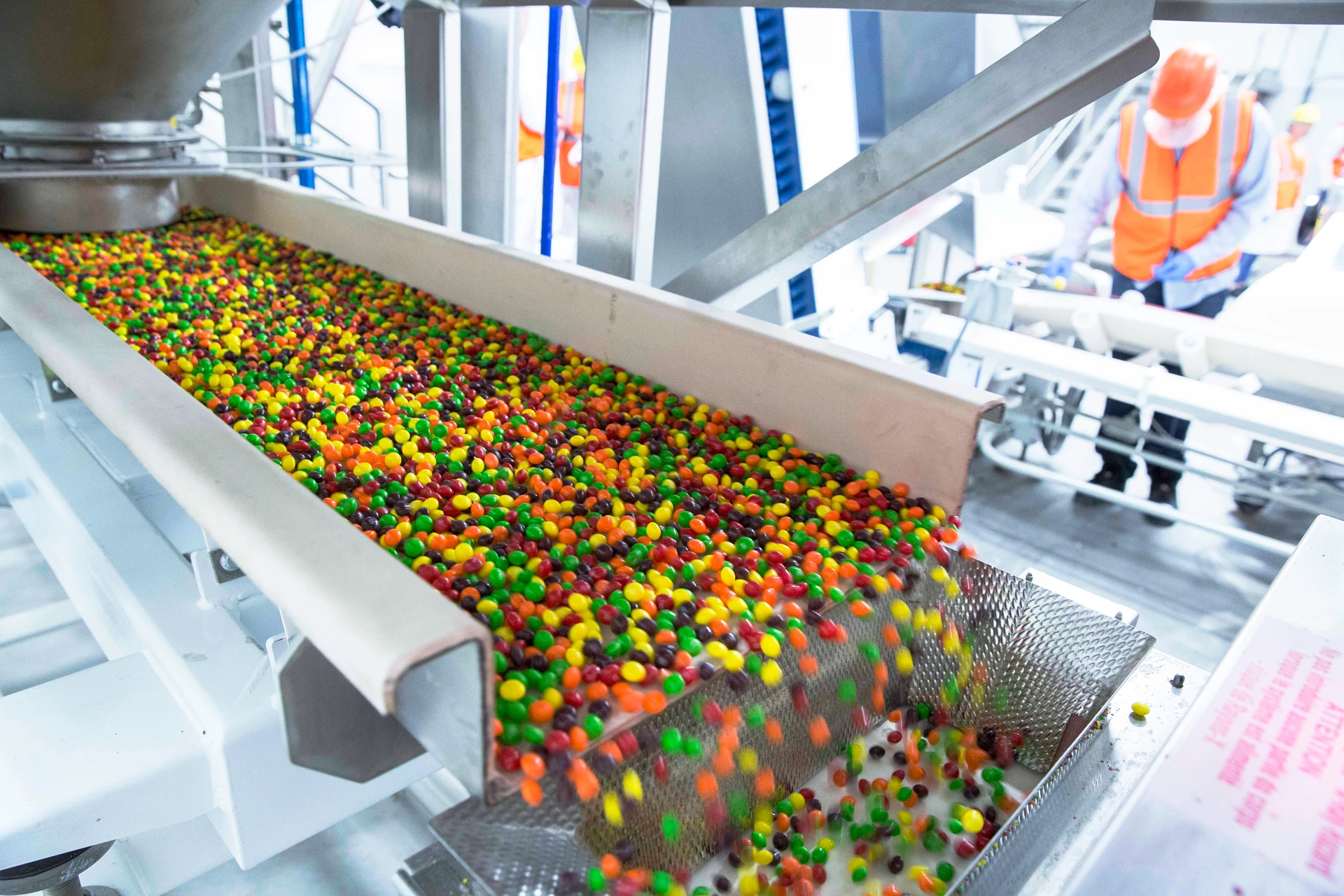
No, it isn’t. Because I grew up in America, where purple Skittles are grape, and not in the U.K., where they are—gulp—black currant. And I’ve just tasted each version back to back.
I’m conducting this cross-the-pond taste test with a small mountain of candy sent my way from Mars Wrigley, the $35 billion candy giant behind chocolatey treats like Snickers and M&Ms, along with fruity tooth-burners like Skittles and Starburst. As we all know in the age of the internet, the mass-produced foods we think we know as U.S. products can vary wildly across the globe. In India, you can buy a vegetarian burger called the McAloo Tikki at McDonald’s, because one enterprising franchisee realized that a patty of spiced potato and peas would appeal to many Hindus who don’t eat beef. In Japan, you can taste Kit Kats in flavors such as ginger ale and roasted corn, because there, candy bars can be elevated to boutique status, becoming a nice souvenir representative of one’s travels.
Cultures appreciate flavors differently, and regionally, for all sorts of reasons, which is why Mars Wrigley has opened R&D labs in the U.K. and China, where the Skittles brand is not just a five-flavor “rainbow” of sugar, but a global pantry of 150 different tastes that go in and out of circulation, all honed to regional market trends and cultural preferences. In China, flavors lean floral. The U.K. prefers more what the company calls “exotic” fruits. And in the U.S., we have a knack for novelty.

Indeed, trends are where all new Skittles flavors start. From there, food scientists begin literally cooking up prototypes to try internally. These prototypes can be a far cry from the Skittles you know. Rather than being rendered in glowing colors with shattering shells, they might be chewy, undyed test candies. “It’s a great way to learn about the flavor itself,” says Slad. When the team starts getting excited about a flavor, it tests it with consumers as quickly as possible, using more polished forms of the candy, akin to what would come off the factory line.
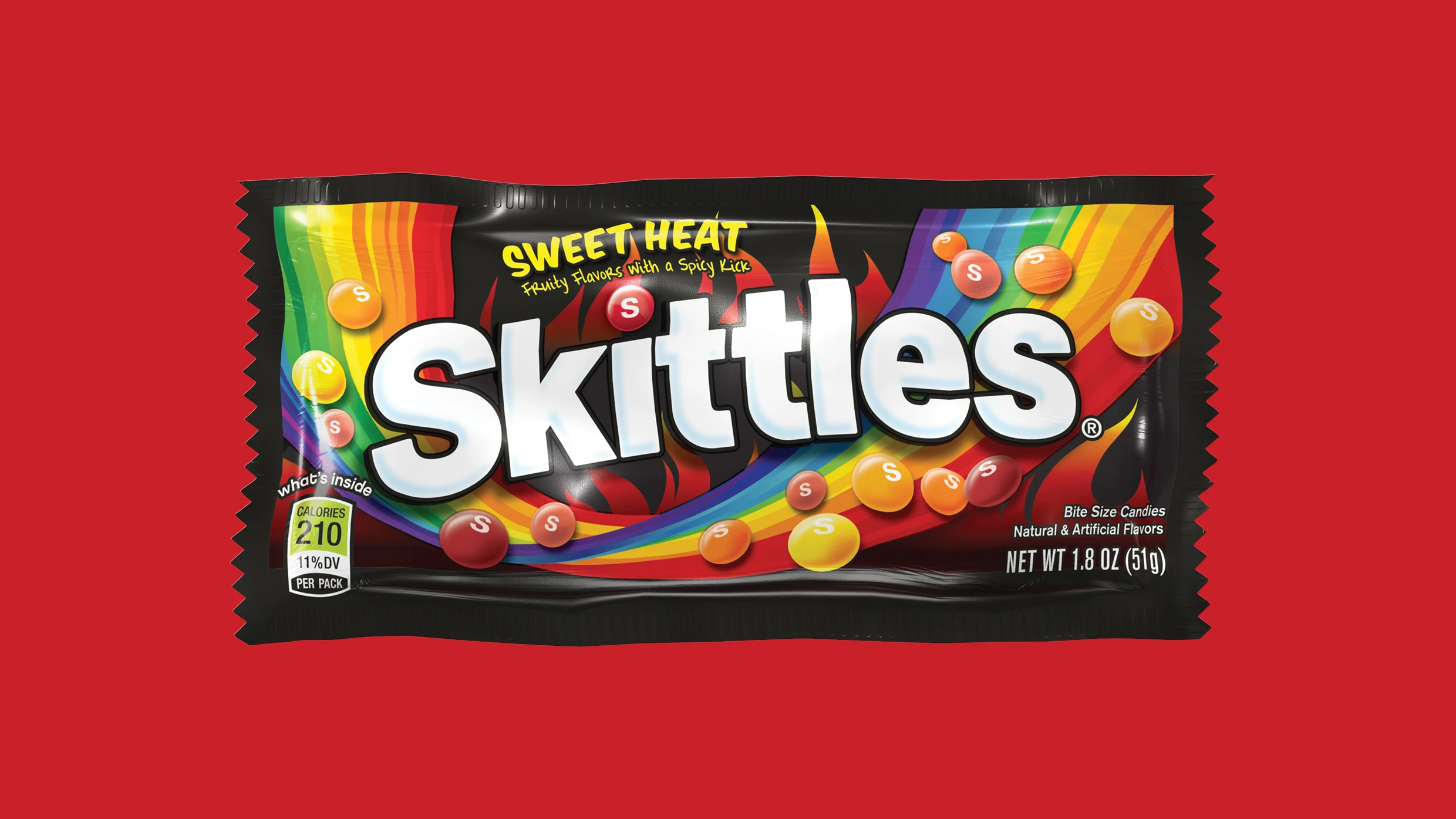
They tweak this flavor-color-name relationship until it’s just right. Along the way, the R&D team begins a bit of guerilla marketing inside the company to get buy-in, making sure that everyone from the big decision-makers to the marketing department tastes the new flavors.
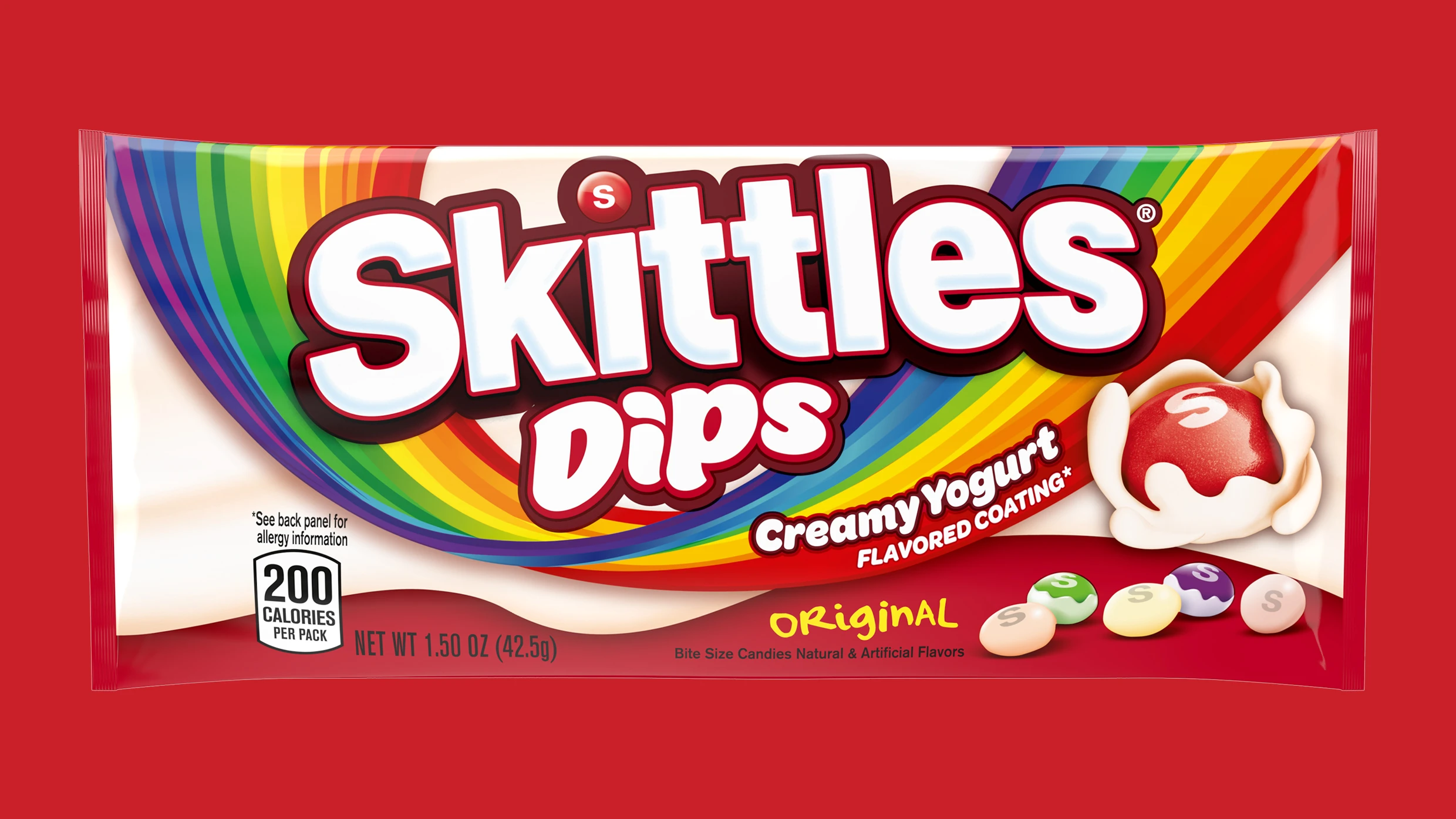
Recently, the team developed a new, yogurt-coated product called Skittles Dips. “This [idea] was brought from consumers looking for creamier, an indulgent experience, and a new texture of Skittles,” says Slad. “Through ideation sessions, someone had the idea, what if we just put another coating on top of Skittles’ shell? What would it do? We started to prototype, and early on, we had all our prototypes in containers. People started getting word around the office, [trying them], and it was amazing.”
Dips have now launched in the U.S. and U.K., but just like the purple flavoring, the yogurt coating is tuned differently in each region. “If you taste the European one . . . the yogurt is a little less sweet and more sour than the U.S. product,” says Slad. My taste test confirmed it. The U.K. Skittles Dips have a yogurt covering that takes a punchy, fermented twist as it melts onto your tongue. The U.S. Skittles Dips are sweeter right off the top, and any semblance of yogurt has been shaved away for milky dairy fat. As a result, U.S. Skittles Dips taste like they might be dipped in white chocolate. This U.S. preference for sweetness is a trend that Mars Wrigley fully supports in flavor development. For instance, China’s strawberry Skittle is more natural tasting than in the U.S., because our strawberry Skittles have more sugar.
Another new varietal that launched for Halloween this year is aimed at the U.S. craving for novelty. Called Skittles Zombie, each bag features a randomized color that tastes like, yes, a rotten zombie.
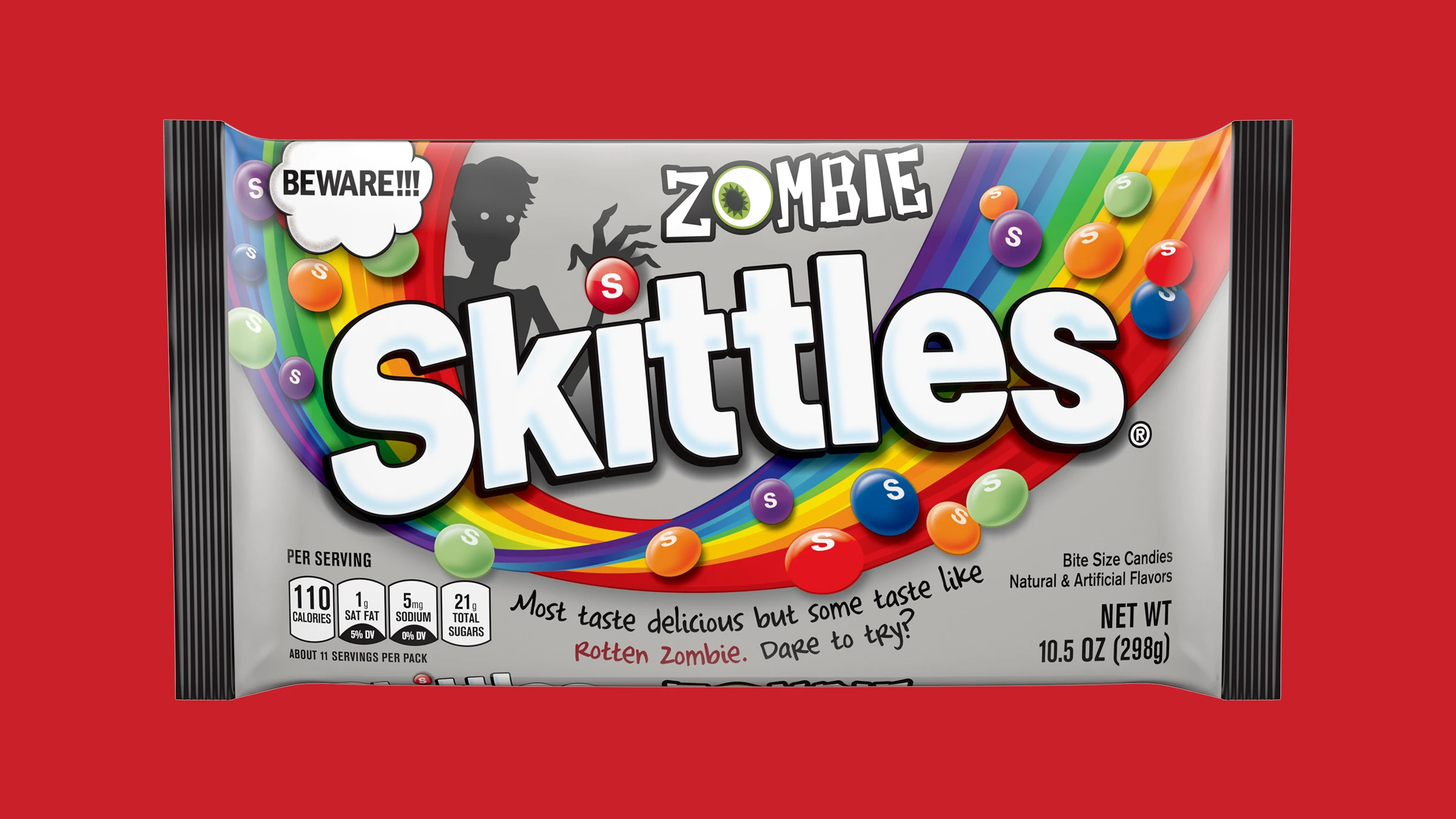
“It’s meant to share with friends to share the experience. What we’re encouraging is that we’re sharing these moments on social media,” says Slad. “We started with an idea of, let’s launch a zombie-like product through flavor. It comes down with having our developers literally online searching what do zombies eat, drink, and smell like, to get inspiration on what that zombie flavor would be.”
As I tear into a bag, I tentatively take bites. Berry. Black cherry. Melon. So far, so good, but I know that with every bite, I’ve emptied another safe chamber in this little game of candy Russian roulette. Blackberry: delicious. That means there’s just one Skittle waiting for me, the orange Skittle. Wait . . . that’s tasty too, like a burst of oranges.
Oh no, I realize. Do I like the taste of zombie? [Editor’s note: Technically, in zombie lore, no one craves the flesh of the zombies; it’s the humans who get gobbled. But “human flesh flavor” was probably too macabre for Mars.]
Then I pop what I assume is another black cherry, and suddenly, the “decayed flesh” taste hits me as I grab a tissue to spit it out. Is this . . . expired beef jerky spiked with sugar? A mushy old tomato with a dusting of rusted iron flakes? Mars Wrigley won’t say, but I loathe the flavor enough that I toss the rest of the bag. The good news is, I don’t crave zombie flesh!
In any case, Skittles has been enjoying its candy trolling and says that Skittles Zombie has gotten its intended reaction.
https://www.instagram.com/p/B3wtrgsBgBW/
“Being part of R&D you can expect that experimentation is part of what we do,” says Slad. “There’s a high likelihood that many prototypes don’t make it through. That’s inherently part of our job. If everything were making it through, we’re not pushing the boundaries. That’s the expectation across my team.”
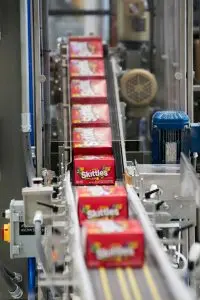
“[At Skittles] we stand for the unexpected. So you’d expect this from us,” says Slad. “The flavor pantry is not a stagnant thing; it’s something we update regularly. So as trends come and go, we’re on the forefront so we can hit them while they’re hot.”
Does that mean Skittles will soon have 200 or 250 flavors globally, rather than the current 150?
“Right now we still have room to go, so it’s getting bigger,” says Slad. “But sometime we may want to clean shop a little bit.”
Recognize your brand’s excellence by applying to this year’s Brands That Matter Awards before the early-rate deadline, May 3.
